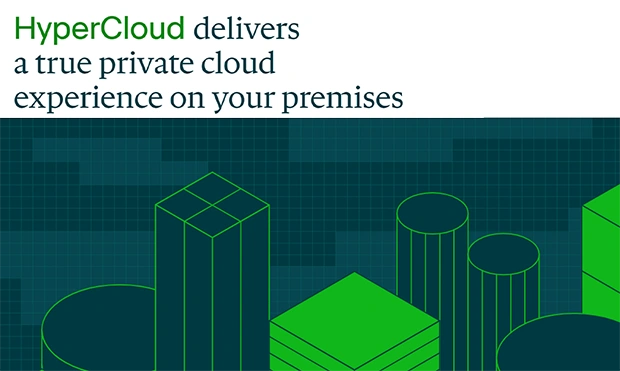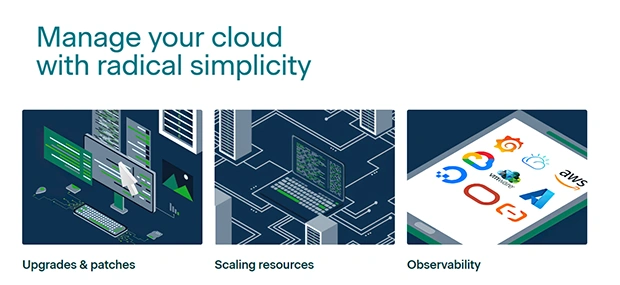
Unveiling the Next Generation of Cloud Technology
The paradigms of cloud computing are continuously evolving. Large organizations frequently encounter obstacles transitioning to the cloud, seeking solutions that bridge the gap between reducing complexity and enhancing IT agility. In this new era, SoftIron steps into the limelight with its HyperCloud offering, designed to redefine the experience of private cloud infrastructure by delivering on the promise of a true cloud experience within the confines of on-premises operations.
Dissecting the “True Private Cloud” Phenomenon
The rhetoric of delivering a “true private cloud” experience has been a subject of intense debate in the cloud computing arena. Enterprises are on a relentless hunt for infrastructures that replicate the public cloud’s flexibility and scalability. This search has intensified, especially after the Broadcom acquisition of VMware, which prompted a reevaluation of existing virtualization technologies. HyperCloud emerges as a solution uniquely tailored to meet these stringent demands, promising a significant upgrade from the current offerings and stipulating a paradigm shift into what enterprises can expect from their on-premises data centers.
HyperCloud’s Strategic Innovations: Ahead of the Curve
HyperCloud is not merely an incremental upgrade to current private cloud offerings—it’s a radical overhaul. The architecture allows enterprises to witness the rapid deployment typically associated with public clouds, a feature glaringly absent in traditional private setups. HyperCloud’s half rack, half-day installation pledge presents a stark contrast to the prolonged and intricate deployments synonymous with older systems.
Furthermore, HyperCloud’s capabilities include unprecedented scalability and elasticity. Gone are the days when on-premise infrastructure signified rigidity and limited growth. HyperCloud permits users to scale components—their compute, storage, and network capabilities—without inherent restrictions, truly embodying the essence of the cloud’s promise. Additionally, nodes can be introduced or decommissioned with the system adeptly reallocating resources accordingly.
What distinguishes HyperCloud even further is its user-centric infrastructure management. It caters to modern expectations of efficiency and agility by supporting portals and API-driven tools for “Infrastructure-as-Code” deployment, allowing the use of HashiCorp Terraform and SUSE Rancher for streamlined maintenance and operation—attributes once exclusively attributed to public cloud services. With full secure multi-tenancy, SoftIron assures users that separation and privacy of workloads is maintained, even in a shared environment.
By honing these strategic innovations, HyperCloud stands set to eclipse conventional private cloud installations, providing a beacon of versatility for enterprises wrestling with the demands of modern-day data processing and management.
Unpacking SoftIron’s Upgrades: A Giant Leap in Computing Power
A new era of computational capability has dawned with SoftIron’s latest additions to their HyperCloud ecosystem. The deployment of 64-core/128-thread AMD EPYC compute nodes ushers in a level of processing power primed for the most demanding applications and workloads. Alongside, the integration of NVIDIA-based GPU intelligence nodes offers unprecedented compute capabilities for AI, machine learning, and analytics-driven workloads.
In parallel, SoftIron introduces Socionext-based ASIC intelligence nodes, further reinforcing its arsenal with specialized processing capabilities that cater to a wide range of industry-specific computational needs. As these powerful new nodes come online, customers gain the ability to manage increasingly complex and resource-intensive tasks.
Redefining Connectivity: SoftIron’s Next-Level Interconnects
The transformative potential of SoftIron’s HyperCloud is not limited to compute and storage; the interconnect fabric is equally paramount. With the introduction of three new interconnect nodes, SoftIron sets the stage for future-proofing data center infrastructures, tackling the galloping pace of data exchange head-on.
The new 1GbE Management Interconnects provide a solid and reliable administrative network, ensuring seamless communication between the cloud management components. The 25GbE High-Speed Interconnects accelerate the flow of data throughout the private cloud, reducing latency and enhancing performance for critical applications. At the apex, the 100GbE Spline Interconnects are the vanguards of HyperCloud’s networking prowess, aptly designed to handle the vast bandwidth requirements of tomorrow’s data-intensive workloads, facilitating a seamless and lightning-fast data transit experience.

The Reseller’s Perspective: Etage Weighs in on HyperCloud
In the wake of shifting market dynamics, reseller Etage stands as a vocal advocate for the innovations brought forward by HyperCloud. CEO Rob Hough’s insights spotlight the necessity for enterprises to adapt to a future where cloud-native infrastructure isn’t just a trend but the norm, and on-premises technology remains a critical piece of the IT puzzle.
Etage, like many in the reseller community, observes the VMware-Broadcom acquisition’s ripple effect causing a reassessment of technology stacks across the industry. With Hough’s commentary, it becomes clear that HyperCloud’s entry isn’t merely timely; it’s a strategic imperative for businesses grappling with the transition to adaptable and scalable infrastructure models. Positioned as a viable alternative to conventional cloud solutions, SoftIron’s partnership with resellers like Etage enhances the capacity to navigate the ongoing evolution in cloud computing with finesse.
HyperCloud and Industry Evolution: A Closer Look at Use Cases
HyperCloud’s ascent comes at a critical juncture in the tech industry’s trajectory, where the architecture of on-premises infrastructure is scrutinized for its proficiency to uphold modern enterprise workloads. The use cases defining this growth are varied but share common underlying concerns that HyperCloud addresses with its innovative design.
Firstly, security, data residency, and sovereignty remain predominant reasons for maintaining on-premises solutions. When large datasets are involved, the logic of data gravity dictates that computation is best performed in proximity to the data’s resting place to optimize efficiency and speed, a principle that HyperCloud adheres to with its scalable and elastic architecture.
Secondly, edge computing is gaining prominence, catalyzed by the necessity for immediate data processing at the source to minimize latency. HyperCloud’s agile infrastructure peculiarly suits such edge workloads, reinforcing its fit for organizations setting sights on edge computing innovations.
Lastly, the phenomenon of ‘cloud repatriation’ echoes through the corridors of enterprises as certain workloads migrate back to on-premises setups from the cloud. Financial considerations, coupled with control aspects, underlie this trend, one that HyperCloud is well-equipped to accommodate through its scalable and elastic private cloud solution.
The Genesis of SoftIron’s HyperCloud: A Story of Innovation
The inception of HyperCloud isn’t a tale of happenstance but one of deliberate, strategic design. SoftIron’s commitment to paradigms of modern cloud infrastructure commenced with tackling intrinsic scaling issues head-on. This systems and holistic viewpoint gave rise to a suite of private cloud storage nodes that laid the groundwork for additional technological advancements in networking and computing.
SoftIron’s infrastructure doctrine revolves around four core principles, including atomic peering, native ephemerality of resources, distributed intelligence across the network, and a commitment to a secure and efficient design ethos. Each node, or as referred to by SoftIron, an atomic cloud peer (ACP), embodies these principles to form a cohesive, self-functioning fleet of resources.
SoftIron’s hypothesis posits that a purpose-built infrastructure from the ground up is the only path to achieving true cloud capabilities in a private setting—a sentiment echoed by hyperscalers who ventured down similar paths years ago. The proposition that a private cloud can operate with the autonomy and effortless scale of its public counterparts becomes an attainable reality within SoftIron’s ecosystem.
The Future-Proofed Data Center: Scaling with HyperCloud
A truly scalable private cloud infrastructure is not limited by increments or predefined configurations. HyperCloud champions this tenet with its capability for independent, smooth, and limitless scale-out. Specific attributes mark this scalability:
- Nodes within HyperCloud can be scaled independently, allowing for customization based on evolving needs, such as increased storage demands independent of the computing layer.
- Incremental scalability implies that organizations are not forced into large, often unwieldy, one-size-fits-all solutions but can expand their infrastructure organically.
- The promise of limitless scalability is a pinnacle of the HyperCloud offering, ensuring that infrastructure growth is never capped by arbitrary thresholds.
By infusing these scalability features into its DNA, HyperCloud not only caters to the current needs of organizations but is also ready to meet the unforeseen demands that future innovations might impose.
The Verdict: Is HyperCloud the New Standard for Private Clouds?
In appraising HyperCloud within the ever-shifting sands of industry requirements, its merits extend beyond the normative benchmarks for private cloud infrastructures. HyperCloud reimagines the on-premises environment with an orientation toward the elasticity, manageability, and scale previously reserved for public cloud constructs.
HyperCloud’s innovations may indeed set a new precedent, challenging the status quo and establishing a new lexicon by which private cloud performance is measured. As SoftIron continues to chart these waters, the broader implications for enterprise IT environments become clear—HyperCloud isn’t just reshaping the foundation of private cloud systems; it’s likely pioneering the silhouette of future enterprise data centers.






